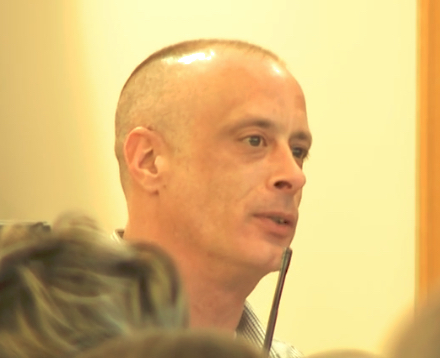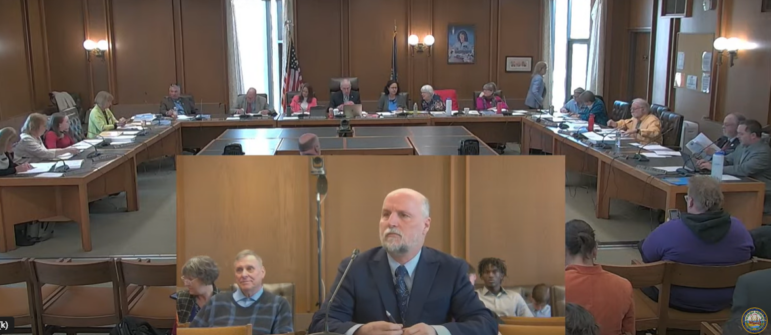By THOMAS P. CALDWELL, InDepthNH.org
CONCORD — A civil lawsuit against Casella Waste Systems, Inc., making its way through the U.S. District Court for New Hampshire since May 2018, will proceed after Judge Paul J. Barbadoro’s denial of the parties’ cross-motions seeking summary judgment.
The suit by Toxics Action Center, Inc., and the Conservation Law Foundation claim that North Country Environmental Services, Inc., Casella’s subsidiary that operates a solid waste landfill in Bethlehem, is in violation of the federal Clean Water Act by discharging pollutants into the Ammonoosuc River.
The federal judge’s Aug. 11 decision comes at a time when NCES is addressing deficiencies outlined by the state’s Waste Management Division following an accidental discharge of 154,000 gallons of leachate this past May. The company has until Sept. 1 to meet the state requirements aimed at avoiding another spill.
Meanwhile, another Casella subsidiary, Granite State Landfill, LLC, is seeking a Wetlands Board permit to site another landfill in the adjacent town of Dalton. The Wetlands Board held a public hearing on the Dalton landfill proposal on July 14, and has extended the comment period to Sept. 13.
Wednesday’s decision in the civil lawsuit hinged on technical interpretations of the law as outlined in the Clean Water Act and related court cases. The issue at hand was whether a surface water channel between the landfill and the Ammonoosuc River qualifies as “point source” or whether it is simply a “water of the United States.”
“Because I conclude that facts material to the resolution of this issue remain in genuine dispute, I deny the cross-motions,” Barbadoro wrote.
The summation states, “the undisputed evidence shows that unless the Drainage Channel is a waste treatment system, it is a tributary of the Ammonoosuc River and therefore may be considered a water of the United States and not a point source within the meaning of the CWA.”
The distinction is important because, if the channel carrying water from a network of seeps and springs meets the federal definition of a “water of the United States,” any pollutants it discharges into the Ammonoosuc are not considered additional pollution. Water of the United States is considered a single collective of streams and rivers.
If, on the other hand, the modifications that NCES made to reduce the amount of iron and manganese that were collecting along the drainage channel and making their way into the river made the channel a waste treatment system or a “point source,” then the pollutants carried to the Ammonoosuc would be considered additional pollution.
The company sought a summary judgment to dismiss the lawsuit on the grounds that the iron and manganese were naturally occurring prior to the siting of the landfill on the 61-acre property and, although the landfill adds to the amount of the pollutants, their mitigation efforts — necessary for the permit from the Department of Environmental Services — did not make either the drainage channel or the landfill itself a point source.
The plaintiffs argued the opposite, saying the drainage channel is not a tributary of the river because its natural features have been altered; that it is not a water of the United States because it serves as a waste treatment system; and even if it is a water of the United States, it is a point source.
In his summation, Barbadoro concluded, “A genuine issue of material fact exists … as to whether the Channel was designed to function as a waste treatment system. I reject plaintiffs’ alternative theory that a channel can be both a point source and a water of the United States at the same time.”
The landfill dates back to 1976, when a local resident used a five-acre excavated gravel pit as a dump. Because the landfill was unlined, the waste eventually leached contaminants into the groundwater underneath, forming a “contaminant plume,” according to the court document.
The contamination was detected in the early 1980s, and the Department of Environmental Services granted a permit to a predecessor company to create an 18-acre double-lined landfill on the site while removing all of the solid waste and stained soil from the unlined landfill.
The new landfill was completed in 1993, and the DES required a network of groundwater monitoring wells between it and the river.
In 1994, a subsidiary of Casella acquired the stock of the corporation that owned and operated the landfill and changed the name of the company to North Country Environmental Services.
The next year, the DES established a groundwater management zone to monitor the migration of contaminants.
Elevated levels of iron and manganese have been detected consistently since the monitoring began, and since March 2013, elevated levels of both metals were detected in all water samples taken at the lower end of the drainage channel.
Water samples collected from the Ammonoosuc downstream from the drainage channel also had higher levels of iron and manganese than water samples taken upstream.
As a condition of renewing the landfill’s groundwater permit in 2002, the DES required a plan to reduce the concentrations and eliminate iron bacteria deposits. That is when NCES excavated some 176 tons of contaminated sediment from what is known as the Main Seep and the drainage channel, then placed woody debris and logs along the drainage channel to reduce erosion and sedimentation.
The plaintiffs maintain that, because contaminants are still reaching the Ammonoosuc, the company must obtain a federal permit.
With the rejection of the motions for summary judgment, the case will remain on the docket of the U.S. District Court for the District of New Hampshire.





